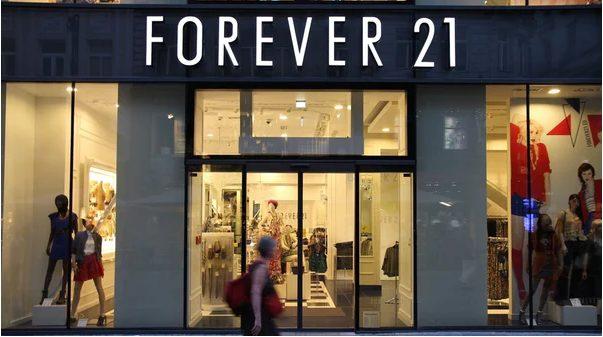On Sunday evening, it was announced that the ubiquitous mall-based fashion retailer, Forever 21, has filed for Chapter 11 bankruptcy protection, joining the growing list of clothing apparel outlets to fall victim to the high pressures associated with today’s competitive online market.
In 2019, major retailers have announced plans to close down approximately 8,500 stores in the U.S., while opening 3,446, according to a tracking by Coresight Research. Last year, there were 5,844 closures and 3,258 openings, Coresight said.
However, in Forever 21’s case, filing for Chapter 11 is only a means to an end.
What Is Chapter 11?
A case filed under chapter 11 of the United States Bankruptcy Code is frequently referred to as a “reorganization” bankruptcy. It is a form of bankruptcy that involves a reorganization of a debtor’s business affairs, debts, and assets.
Named after the U.S. bankruptcy code 11, corporations generally file Chapter 11 if they require time to restructure their debts. This version of bankruptcy gives the debtor a fresh start. However, the terms are subject to the debtor’s fulfillment of his obligations under the plan of reorganization.
Another ‘Problem’ to Worry About?
Evidently enough, Forever 21’s filing does not come as a surprise, as the company’s restructuring efforts and filing have been speculated for months. However, this is another unfortunate event for the company, as it was recently sued for over $10 million by American pop-sensation, Ariana Grande for trademark infringement.
With approximately 815 stores globally, the effect of the recent Chapter 11 filing will force the California-based company to close up to 200 U.S. stores, and up to 350 overall, according to court records obtained by Grit Daily. The company expects to exit most of its locations in Asia and Europe.
The Restructure
In a statement to its customers Sunday night, Forever 21 said its bankruptcy filing was necessary so it could take “positive steps to reorganize the business so we can return to profitability.”
Forever 21 has indicated that it would continue to operate its website and hundreds of stores in the U.S., where it a major tenant for mall owners, as well as stores in Mexico and Latin America.
“This was an important and necessary step to secure the future of our Company, which will enable us to reorganize our business and reposition Forever 21,” Linda Chang, the company’s executive vice president, said in a statement.
The company said its e-commerce made up 16 percent of its sales, witnessed its revenue drop to $3.3 billion last year, down from $4.4 billion in 2016.
With the restructure, it expects to bring in $2.5 billion in annual sales. The company employs about 32,800 people, down from 43,000 in 2016.
To facilitate its restructuring, Forever 21 has obtained $275 million in financing from its existing lenders with JPMorgan Chase Bank, N.A. as agent, as well as $75 million in new capital from TPG Sixth Street Partners, and certain of its affiliated funds.
With this capital, Forever 21 intends to operate in a business as usual manner, honoring all Company policies, including gift cards, returns, exchanges, reimbursement and sale purchases. Forever 21 will use these proceedings to right size its store base and return to basics that allowed the Company to thrive and grow into the fast fashion leader.
The retailer, which did not pay rent on its stores in September in order to preserve capital, believes it can renegotiate many of the leases on its United States stores after the filing, said Jon Goulding, an executive at the consultancy Alvarez & Marsal who will be Forever 21’s chief restructuring officer during the proceedings. He said liquidations might begin Oct. 31 for the stores that are closing and that he anticipated the final count to be below 178.
The Struggle Is Real
Forever 21’s struggles have provoked questions around the appeal of fast fashion more broadly. The industry has faced backlash surrounding the environmental impact of quickly disposable clothes and concerns about worker safety in the wake of the Rana Plaza building collapse in Bangladesh in 2013 that killed more than 1,100 garment workers.
For those millennials who have grown up with the Forever 21 brand, the bankruptcy is a blow to the company that has prided itself on embodying the American dream, as stated by The New York Times, as well as a reminder of how quickly the retail landscape is transforming.
In the early 2000’s, the company joined apparel outlets like Zara and H&M in making fast, disposable fashion widely available to American shoppers, especially young women, who were exposed to new wares seemingly every time they entered a store.
Mr. Chang, the company’s chief executive, said in a 2012 interview that the chain was named Forever 21 because it targeted 20-somethings and because “old people wanted to be 21 again, and young people wanted to be 21 forever.”
But as we are learning very quickly, technology is advancing so rapidly that retail chains either need to catch up and adapt, or be overrun and sold.
A large part of the company’s base is minorities, Ms. Chang said, and customer studies have suggested that 40 percent of Forever 21 shoppers are between the ages of 25 and 40. She said the company would still aim to keep merchandise below $50.
Behind the Legal
Kirkland & Ellis LLP is serving as the Company’s legal advisor, Alvarez & Marsal as its restructuring advisor, and Lazard as its investment banker.
A hearing on the Debtors’ First Day Motions will be held on October 1, 2019 at 2:00 p.m. (ET) before the Honorable Mary F. Walrath, Bankruptcy Judge, United States Bankruptcy Court for the District Of Delaware, 824 Market Street, 5th Floor, Courtroom No. 4 Wilmington, Delaware 19801.
You can click here to view and download the Debtors’ First Day Motions.








